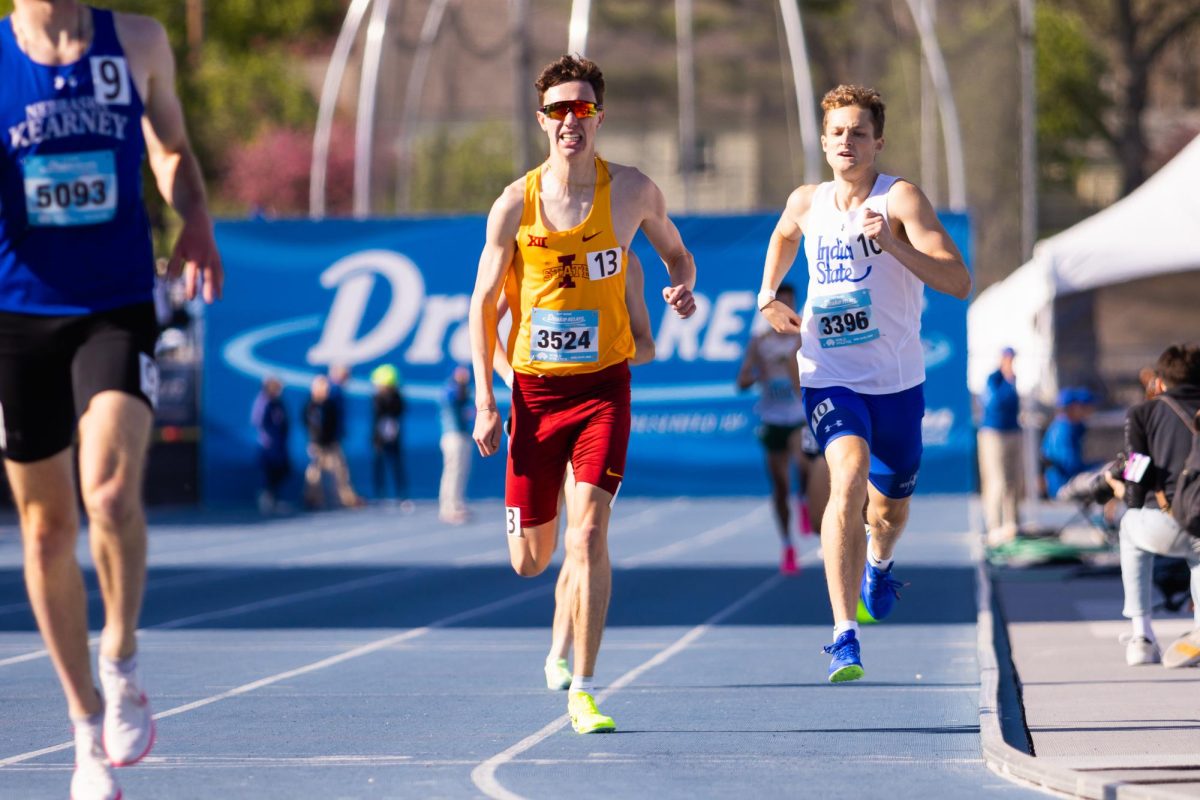The YouTube antidote
October 26, 2007
A field of abstract shapes drifts through a bare, black world. A cube spins about an invisible axis, seemingly changing direction in response to the electronic pulses leaping from an otherwise barren soundscape. Then the cube starts to take control of itself, and the music seems more like a catalog of its motion than the source.
The experience is a bit headier than your typical music video.
This is visual music – the intertwining of electronic music with abstract computer animation, creating a unique, immersive experience. Friday, it comes to Iowa State as part of the annual Lipa Festival of Contemporary Music.
“It’s visual imagery organized as music,” said Christopher Hopkins, assistant professor of music and organizer of the visual music events.
Both the music and imagery of a visual music song are considerably more abstract and artistically inclined than more popular forms of electronic music or video, Hopkins said.
“It’s better for it to be abstract, I think, because you’re not distracted by representations,” Hopkins said.
The two halves of the experience are directly integrated, with the visual aspect intended to make use of musical concepts of space in the same ways as modern dance.
“They’re equal partners – that’s what’s really special about it,” Hopkins said. “It’s not like a film score; it’s not an accompaniment.”
Friday’s concert is a small sample of curator Dennis Miller’s collection, which includes more abstract pieces alongside more familiar-sounding electronica.
“I’m trying to show a good cross-section of stuff,” said Miller, professor of music at Northeastern University in Boston. “There’ll be some 4/4, four-on-the-floor stuff with a great techno beat.”
Creation of visual music
“We’re looking at an art form going on a hundred years old, with its roots a thousand years ago,” Miller said.
Miller hosted a visual music festival at Northeastern University in April, showing a total of 120 pieces from a pool of 350 submissions. Since then, Miller has received requests from around the world – including Iowa State – to demonstrate this hidden genre of music.
Though it bears a similarity to the ubiquitous music video, the intent of a visual music song is very different. Visual music composers usually have a deep fine arts background and explore complex musical concepts and imagery through this medium.
“In a typical music video, you look at the band and there’s a storyline, but it’s personality versus interpretation,” Hopkins said. “You’re not really using images in a musical way.”
Miller said the artistic control over every part of the experience set visual music up as a counterpoint to widely distributed, easily created music videos.
“It’s the antidote to YouTube,” Miller said. “Everyone makes these ridiculous videos in very low quality.”
Composers of visual music, such as Miller, who has four tracks on the program for Friday’s concert, usually create the music and imagery at the same time to keep them in sync – both technically and aesthetically. This isn’t always the case, however, especially when a modern artist creates animation for an old song. Several songs on Friday’s program date from the 1920s through the ’50s.
The equipment used to create the music varies, from bulky external synthesizers and tape loops to compact computers running modern musical creation and computer animation software.
Hopkins said he sees electronic music in general as a modern technological approach to music, and he sees visual music as a fantastic way to explore complexities, especially because the effort really only requires one person.
“Electronic music, for me, allows the creation of unique sounds that are only possible with the electronics,” Hopkins said.
“There are complexities and subtleties only possible with a computer.”
Friday’s show will be free to the public and will make full use of the capabilities of the recital hall’s eight-channel surround-sound system.
“It’s like sitting inside a giant pair of headphones – but all together,” Hopkins said.
Both Hopkins and Miller stressed that, through the variety of styles presented at the concert, patrons should find something they like.
“There’s gonna be something you’ll like – if you don’t like the first piece, I guarantee you’ll like the second,” Miller said. “And, if you don’t like the first half, come back for the second because there’ll be different stuff.”
Visual music events
Friday, 5:15 p.m. lecture:
“The Art of Visual Music”
Dennis Miller describes visual music, including the methods of creation, in detail before the night’s concert.
Friday, 7:30 p.m. concert:
“New Directions in Visual Music”
Selections from the 2007 Northeastern University Visual Music Marathon.
Both events will be held in the Martha-Ellen Tye Recital Hall in Music Hall and are open to the public. There is no charge for admission.
More info:
Center for Visual Music:
Guest artist Dennis Miller:
















